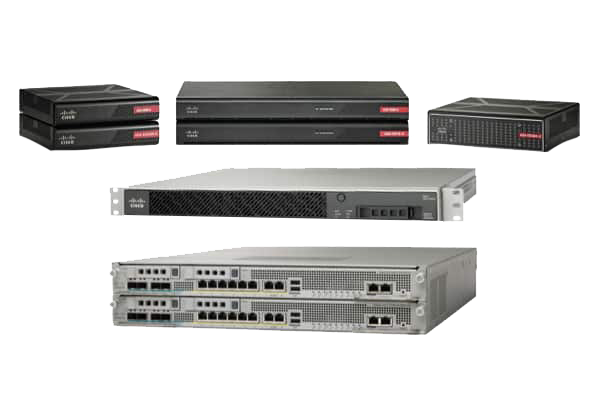Networking equipment is the backbone of any successful business operation. Whether you’re a small startup or a large enterprise, having a robust and reliable network infrastructure is crucial for seamless communication, data management, and overall productivity. However, budgeting for networking equipment can be a daunting task, given the myriad of options and the rapid pace of technological advancements. In this comprehensive guide, we delve into the essential aspects of budgeting for networking equipment to ensure you make informed and cost-effective decisions.
Understanding Your Networking Needs
Before allocating funds, it’s imperative to assess your organization’s specific networking requirements. This involves:
- Evaluating Current Infrastructure: Analyze your existing network setup to identify strengths, weaknesses, and areas that require upgrades or replacements.
- Determining Future Growth: Consider your company’s projected growth to ensure the networking equipment can scale accordingly without necessitating frequent investments.
- Identifying Critical Applications: Recognize which applications are mission-critical and ensure your network can support them with minimal latency and maximum uptime.
Key Components of Networking Equipment
A well-rounded network infrastructure comprises various components, each serving a distinct purpose. Understanding these components is vital for accurate budgeting.
1. Routers and Switches
- Routers manage traffic between different networks, directing data packets to their intended destinations efficiently.
- Switches connect multiple devices within a local area network (LAN), facilitating communication and resource sharing.
2. Firewalls and Security Appliances
Security is paramount. Investing in robust firewalls and other security appliances safeguards your network from potential threats and unauthorized access.
3. Wireless Access Points (WAPs)
With the increasing reliance on wireless connectivity, WAPs ensure reliable and secure wireless access for all devices within your organization.
4. Cabling and Connectors
Quality cabling and connectors are essential for maintaining network speed and reliability. Investing in high-grade materials can prevent future connectivity issues.
5. Network Management Tools
Effective network management tools enable monitoring, maintenance, and optimization of your network, ensuring it operates at peak performance.
Cost Factors to Consider
When budgeting for networking equipment, several cost factors come into play:
1. Initial Purchase Costs
This includes the cost of hardware, such as routers, switches, and WAPs. Prices vary based on brand, specifications, and capabilities.
2. Installation and Configuration
Professional installation and configuration services ensure that equipment is set up correctly, minimizing downtime and potential issues.
3. Maintenance and Support
Ongoing maintenance is crucial for longevity and performance. Budgeting for support contracts or in-house IT personnel is advisable.
4. Upgrades and Scalability
Technology evolves rapidly. Allocating funds for future upgrades ensures your network remains current and can handle increased demands.
5. Training and Personnel
Investing in training for your IT staff ensures they can effectively manage and troubleshoot the network, enhancing overall efficiency.
Strategies for Cost-Effective Budgeting
Implementing strategic approaches can help manage costs without compromising on quality.
1. Prioritize Needs Over Wants
Focus on acquiring equipment that meets your immediate needs while allowing room for future expansion. Avoid overspending on features that aren’t essential.
2. Opt for Modular Equipment
Modular networking equipment offers flexibility, allowing you to upgrade specific components without replacing the entire system, thereby saving costs in the long run.
3. Leverage Bulk Purchasing
Purchasing in bulk can lead to significant discounts. Negotiate with suppliers for better rates, especially if you plan to scale your network in the future.
4. Consider Total Cost of Ownership (TCO)
Evaluate not just the initial purchase price but also the long-term costs associated with maintenance, support, and energy consumption.
5. Explore Leasing Options
Leasing networking equipment can reduce upfront costs and provide access to the latest technology without the commitment of ownership.
Choosing the Right Vendors
Selecting reputable vendors ensures you receive quality products and reliable support. Consider the following when choosing vendors:
- Reputation and Reviews: Research vendor reliability through customer reviews and industry ratings.
- Warranty and Support: Ensure vendors offer comprehensive warranties and responsive support services.
- Compatibility: Verify that the equipment is compatible with your existing infrastructure to prevent integration issues.
Implementing a Phased Budgeting Approach
Adopting a phased budgeting approach allows for gradual investment, reducing financial strain and enabling adjustments based on evolving needs.
Phase 1: Assessment and Planning
- Conduct a thorough network assessment.
- Define clear objectives and budget constraints.
- Develop a detailed implementation plan.
Phase 2: Acquisition and Deployment
- Purchase essential equipment based on priority.
- Schedule installation and configuration to minimize disruption.
Phase 3: Monitoring and Optimization
- Continuously monitor network performance.
- Allocate funds for necessary upgrades and optimizations.
Maximizing ROI on Networking Equipment
To ensure you derive maximum value from your investment:
1. Invest in Quality Equipment
High-quality networking equipment may have a higher initial cost but offers better performance, durability, and lower maintenance expenses.
2. Optimize Network Performance
Regularly monitor and optimize your network to prevent bottlenecks and ensure efficient resource utilization.
3. Train Your Staff
Well-trained personnel can manage and troubleshoot the network effectively, reducing downtime and reliance on external support.
4. Regular Maintenance
Scheduled maintenance prevents unexpected failures and extends the lifespan of your networking equipment.
Future-Proofing Your Network
Anticipating future technological trends ensures your network remains relevant and efficient.
1. Embrace Cloud Computing
Integrating cloud solutions can enhance scalability and reduce the need for extensive on-premises equipment.
2. Adopt Software-Defined Networking (SDN)
SDN offers greater flexibility and control over your network, allowing for dynamic adjustments based on real-time needs.
3. Prepare for IoT Integration
With the rise of the Internet of Things (IoT), ensure your network can support a growing number of connected devices without compromising performance.
Conclusion
Budgeting for networking equipment is a critical component of your organization’s overall financial planning. By thoroughly assessing your needs, understanding key cost factors, and implementing strategic budgeting approaches, you can build a robust and scalable network infrastructure that supports your business objectives. Investing in quality equipment, selecting the right vendors, and planning for future growth ensures that your network remains efficient, secure, and capable of meeting evolving demands.



